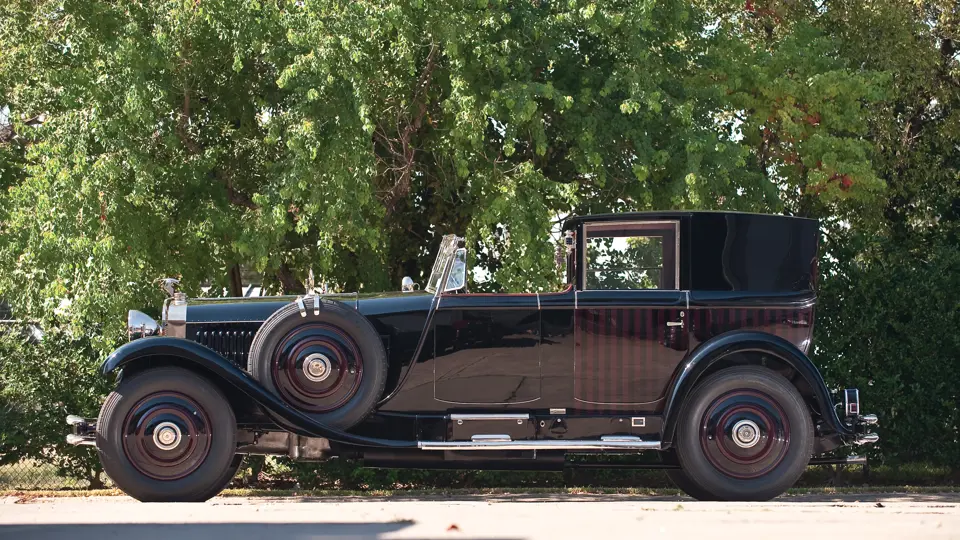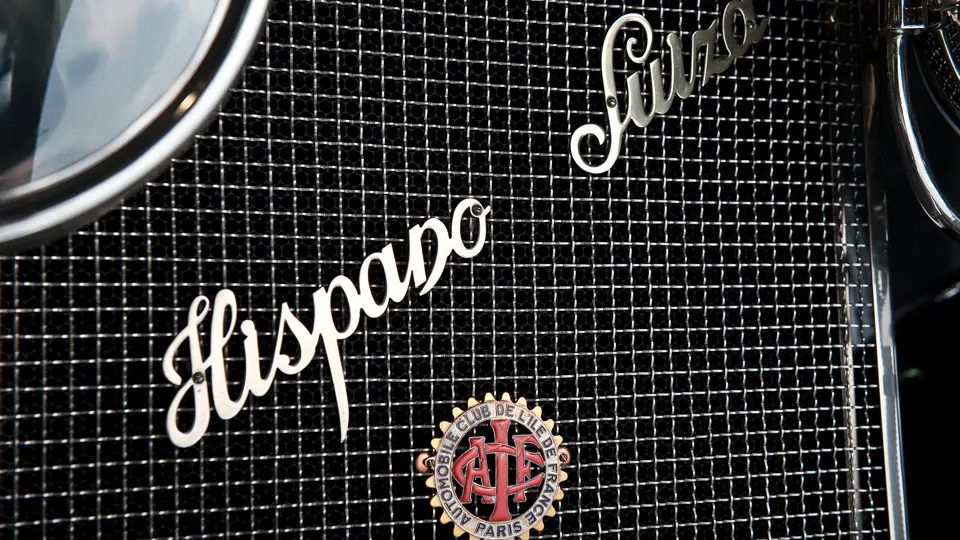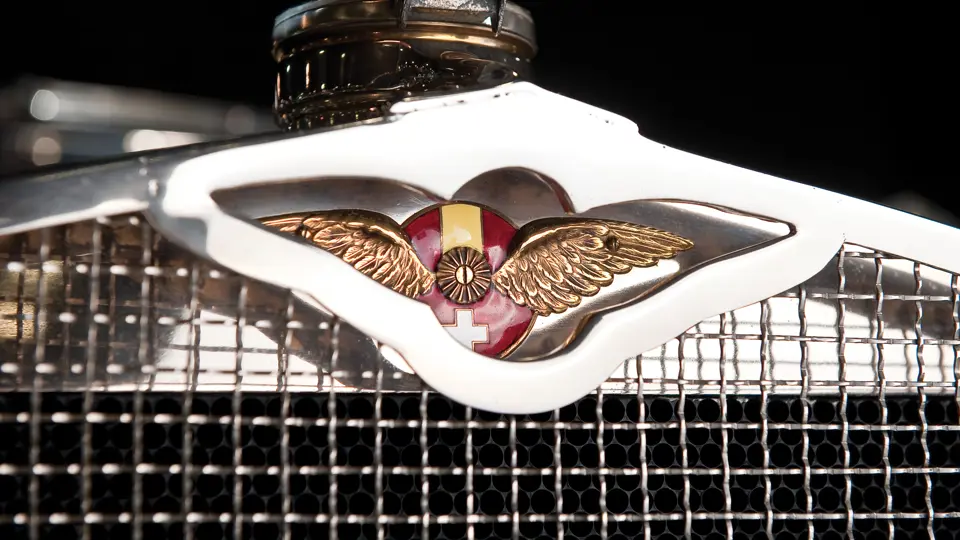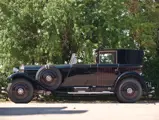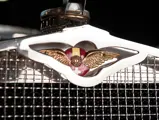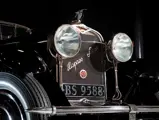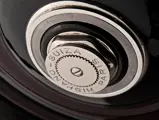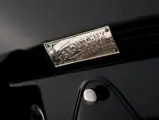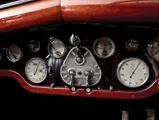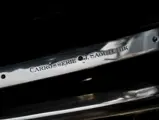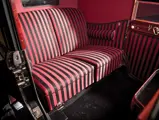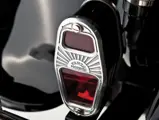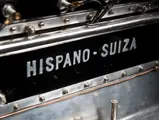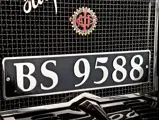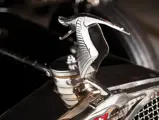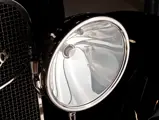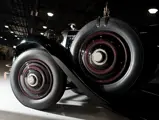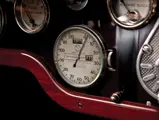135 bhp, 6,597 cc SOHC inline six-cylinder engine, three-speed manual transmission, solid front axle and live rear axle with semi-elliptic leaf springs, and four-wheel servo-assisted mechanical drum brakes. Wheelbase: 133.3"
- Iconic cosmopolitan marque with distinctive body design by Saoutchik
- European craftsmanship and aeronautical engineering
As the name implies, Hispano-Suiza was a cosmopolitan marque, with Swiss and Spanish origins and a parallel manufacturing base in France. The Swiss engineer Marc Birkigt had designed the Barcelona-built Castro, which became the basis for the first Hispano-Suiza of 1904. Birkigt then embarked on a range of well-built T-head fours, which enamored Spain’s King Alfonso XIII. By 1913, overhead cam engines were introduced, but with the outbreak of World War I, Hispano-Suiza turned to aircraft engines under the direction of Birkigt with the hands-on engineering by Louis Massuger, who was also of Swiss descent.
Rather than machining cylinders out of steel, as was the contemporary practice, Massuger and Birkigt developed a cast aluminum design with thick steel liners, which made the engine stiffer, lighter and easier to build. The initial design was a water-cooled V-8 with shaft-driven overhead camshafts. The engine was eventually built in France, Britain, Italy and the United States, as well as in Spain.
After the war, however, Spanish automobile developments were overshadowed by those of a new factory in France, which had opened in 1911. Most significant of these was the H6 of 1919. Described by British historian T.R. Nicholson as “the last word in advanced transport for the rich,” it was powered by an overhead cam six of 6.6 liters. Following from the proven aircraft practice, it was cast in aluminum with steel liners. A fixed-head design with two valves per cylinder, it featured a seven-main-bearing crankshaft with full-pressure lubrication. A light, rigid chassis resulted in excellent performance, and servo-assisted brakes with finned aluminum drums assured quick stops. It was succeeded by the H6B in 1921.
Saoutchik
The prestige of Hispano-Suiza was not derived from performance alone. Much of its renown came from the bodies which graced its chassis, created by the likes of Franay, D’Ieteren, Proulx, Pourtout, Henry Binder and Labourdette. Characterized by individuality and elegance, they attracted celebrities, nobility and royalty, not to mention the wealthy bourgeoisie. However, one of the coachbuilders most associated with Hispano-Suiza was J. Saoutchik of Neuilly, Paris.
Iakov Saoutchik (1880-1957) was born near Minsk, now the capital of Belarus, to a Ukrainian family. At age 19, he emigrated to Paris with his mother and siblings. Having trained as a cabinetmaker, he formed a partnership in furniture-building, which proved providential enough that he could afford to marry and set up on his own in his chosen vocation, coachbuilding, in 1906. His first job was on an Isotta-Fraschini chassis, soon followed by torpedo and convertible bodies on a variety of chassis.
J. Saoutchik, as his name and company evolved, developed not a characteristic style but a variety of styles, depending on the car, the owner and the spirit of the day. Some Saoutchik bodies were straightforward while others were ornate and almost overdone in the manner associated with Figoni et Falaschi. He had, in the words of the late historian Jan Norbye, “an excellent eye for proportions, and gave a lot of thought to body hardware, which often led to new patents.” His son Pierre took over management in 1952, but the French automobile market of the day, as well as a dearth of separate-chassis cars, caused Saoutchik to follow the other moribund coachbuilders to bankruptcy in 1955.
Chassis 10960
Chassis 10960 was delivered on August 26, 1924 to a Mr. de Magnin. Subsequent owners include a Mr. Behna, who in turn sold it in 1962, reportedly complete and original, to a Mr. Boutet. Recorded mileage at the time was 23,000 km, believed correct. The next owner committed it to Wilkinson and Sons of Derby, England for a sympathetic but complete restoration.
The car is nicely painted in gloss black, which is contrasted by a passenger compartment finished in broad stripes of black and claret – a stunning combination. The interior woodwork is inlaid polished mahogany, nicely set off with ivory door handles. The car has lighted running boards for the convenience and safety of its passengers.
The chauffeur’s compartment is done in black leather, with black wool leather-backed carpets. Dashboard instrumentation includes a 120 mph speedometer, tachometer, oil pressure, ammeter, fuel and temperature gauges and a Jaeger clock. The car is equipped with Bleriot headlamps, Grebel swivel spot-lamp, oil opera lamps with stork insignia and mirrors on the dual side-mount spares. Cromos twin-tube bumpers are mounted front and rear.
This car was restored a number of years ago and has enjoyed climate-controlled storage since. As such, its cosmetic condition has held up very nicely. The attention to detail of the Saoutchik coachwork is quite remarkable, particularly when combined with the superior engineering of its Hispano-Suiza chassis. This is, unquestionably, one of the most elegant and stately motor cars of its era.

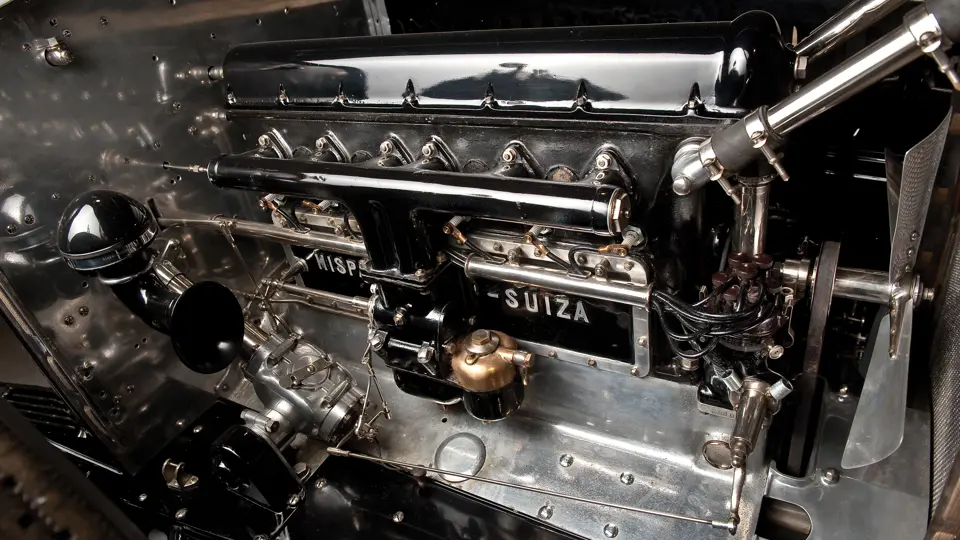


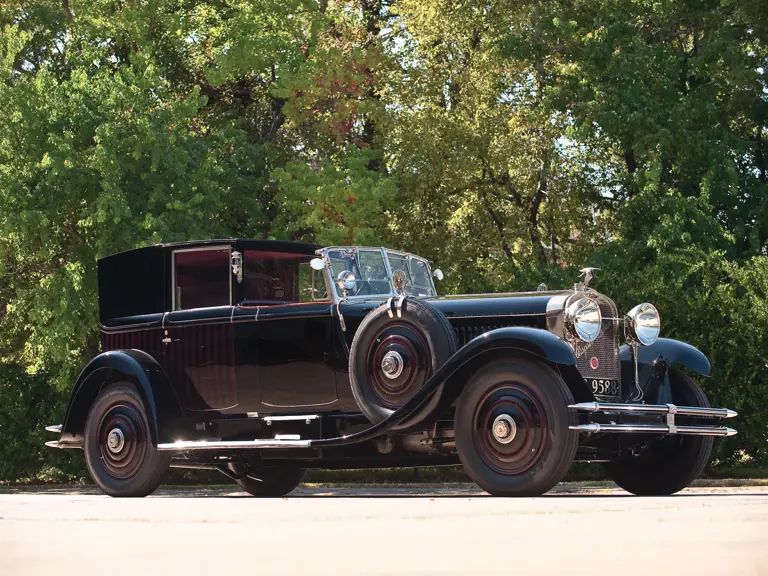
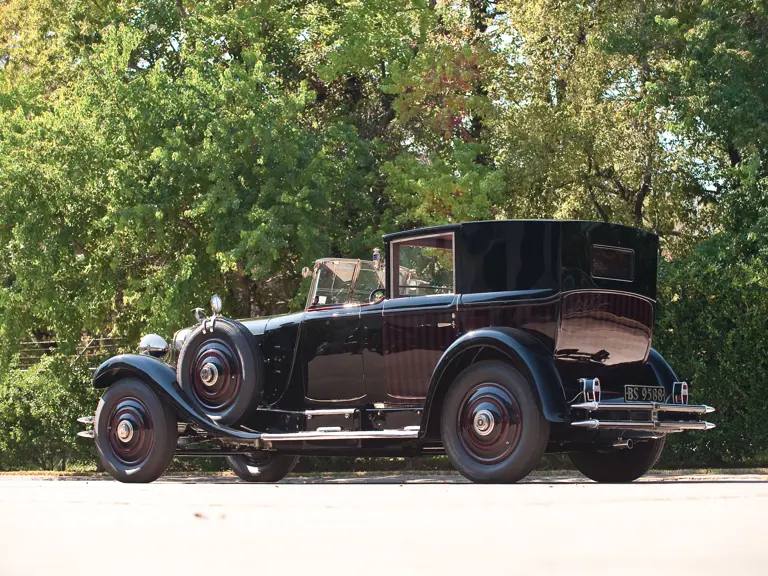
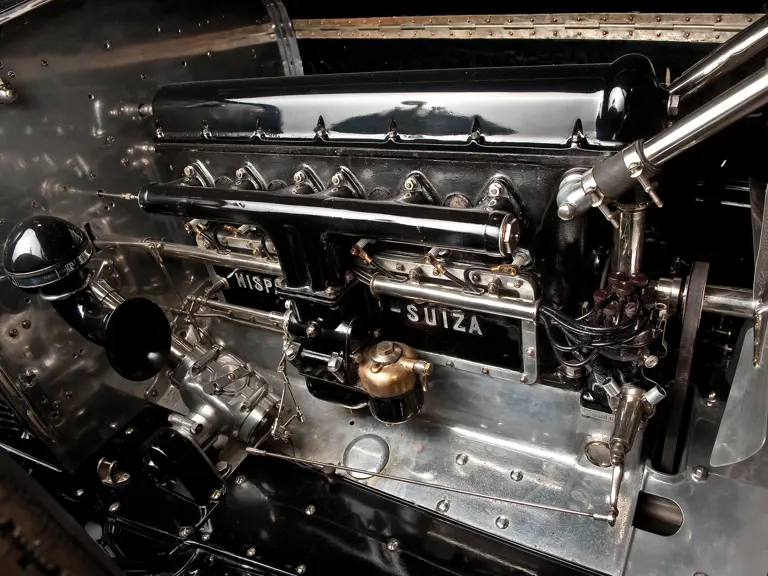
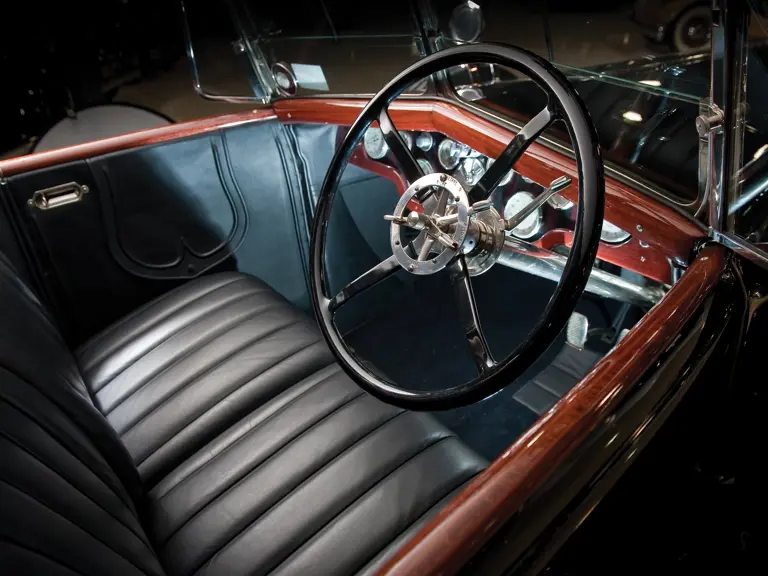
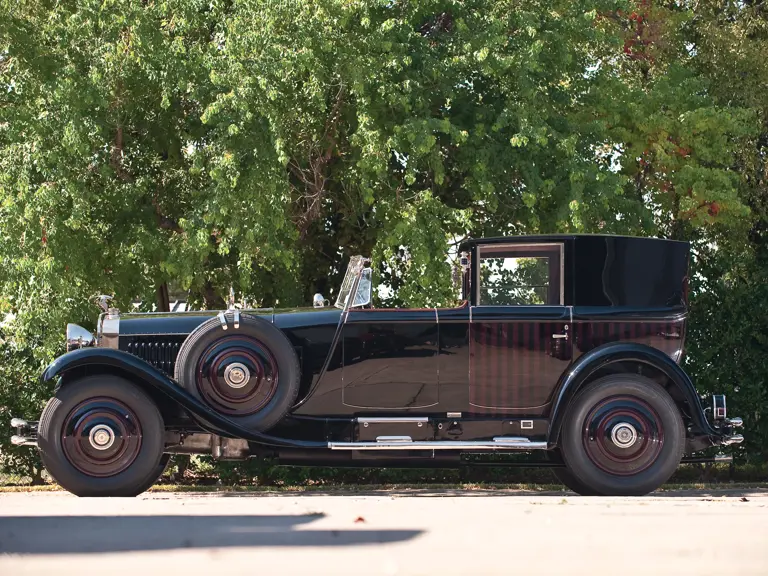
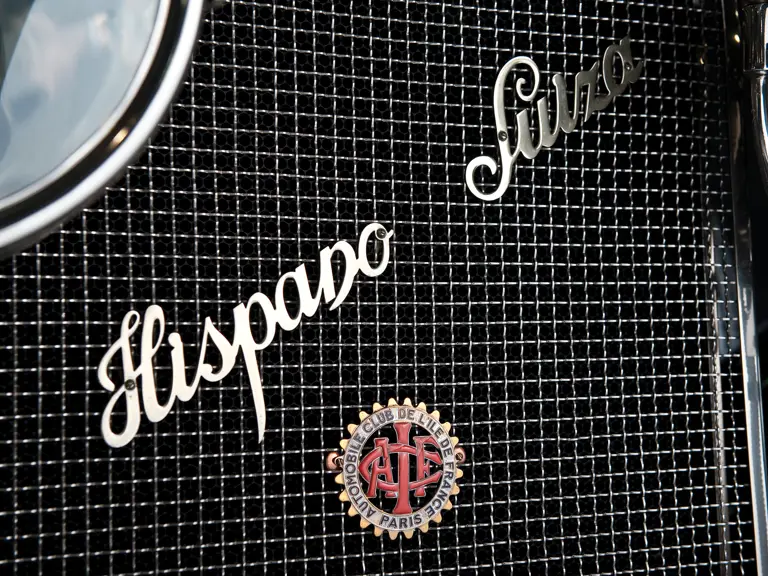
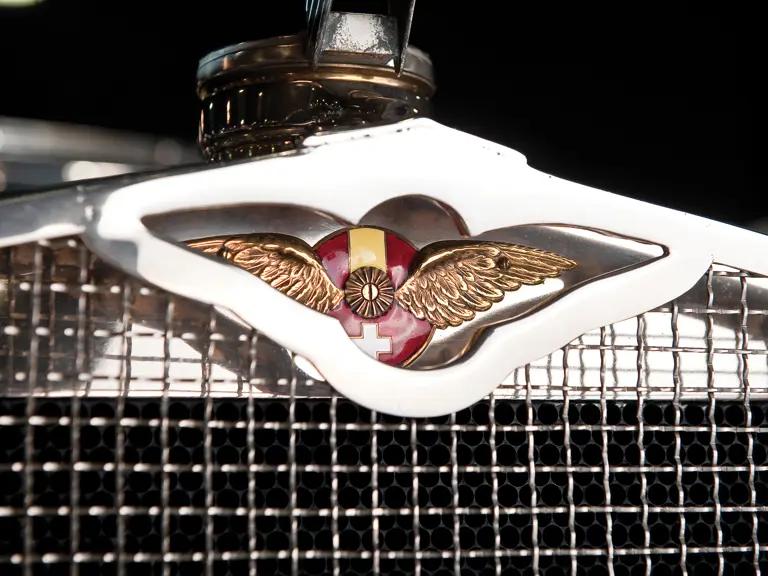
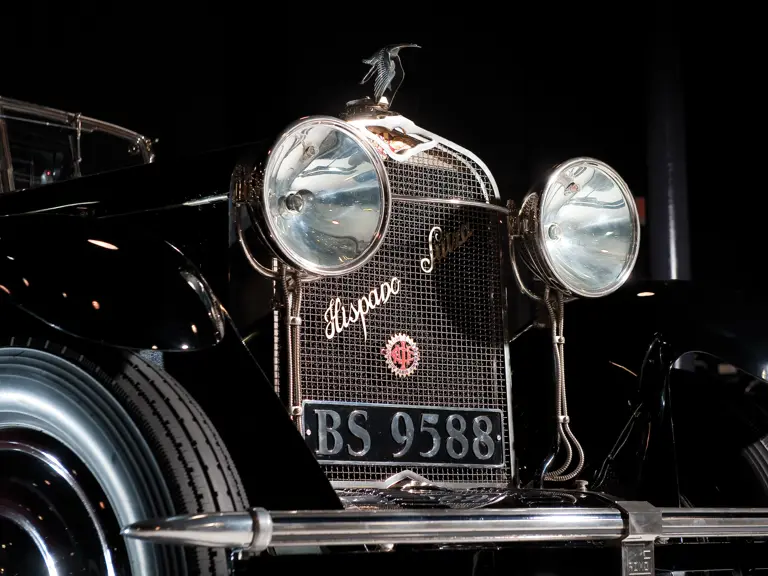
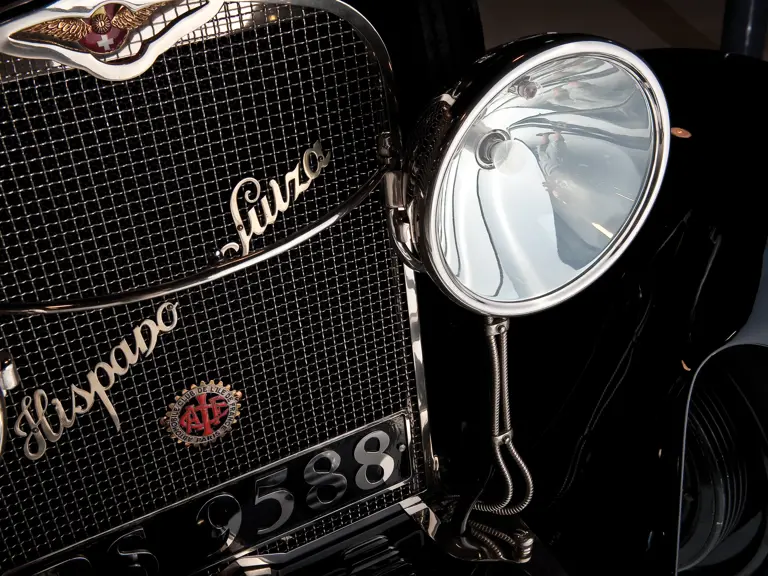

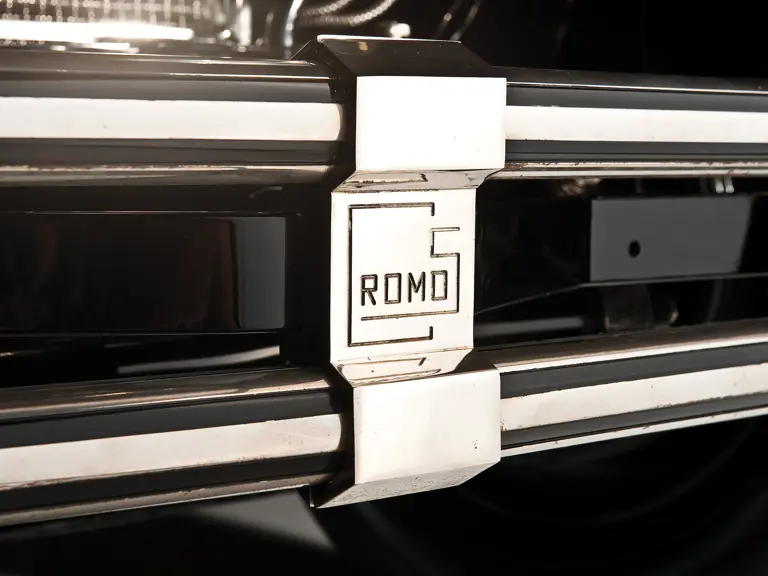
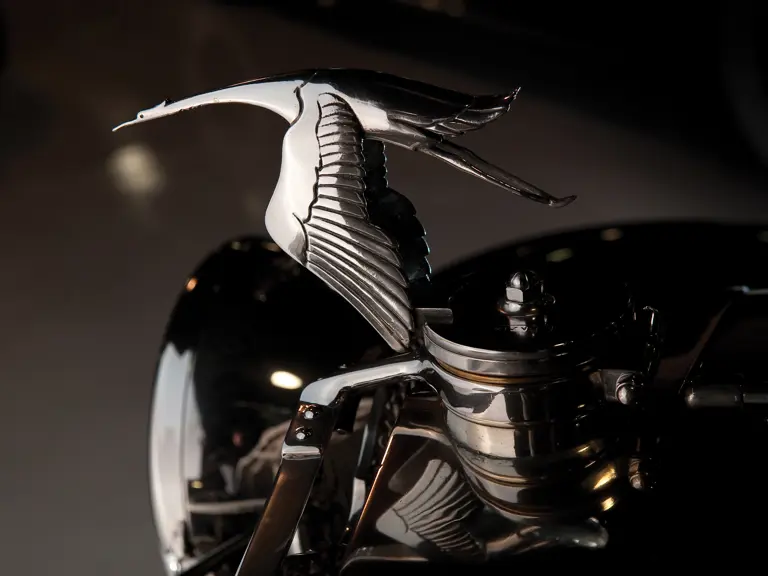


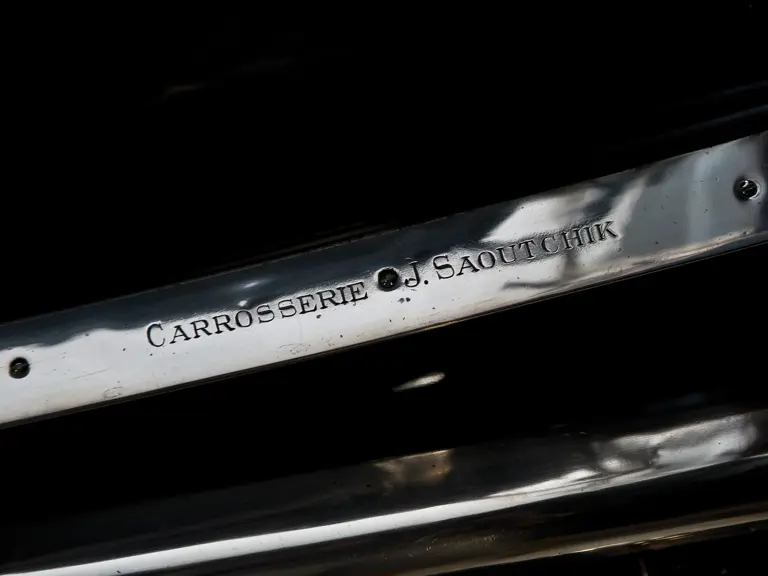
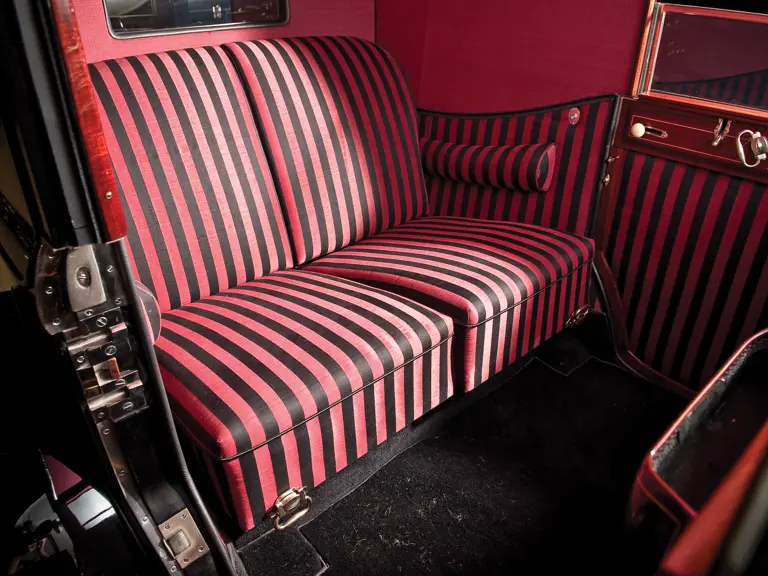
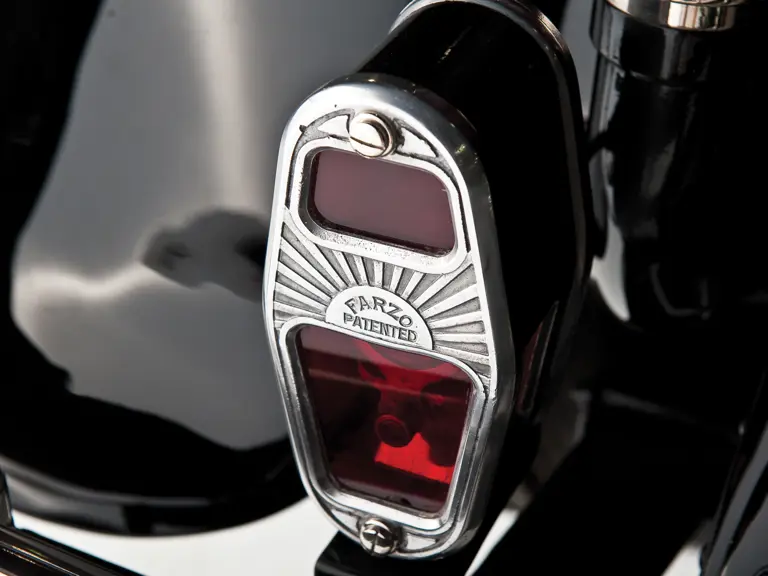
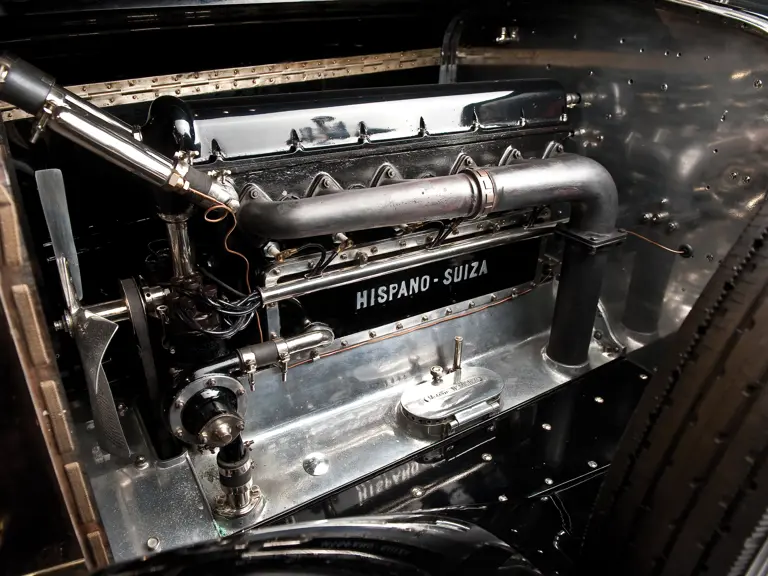
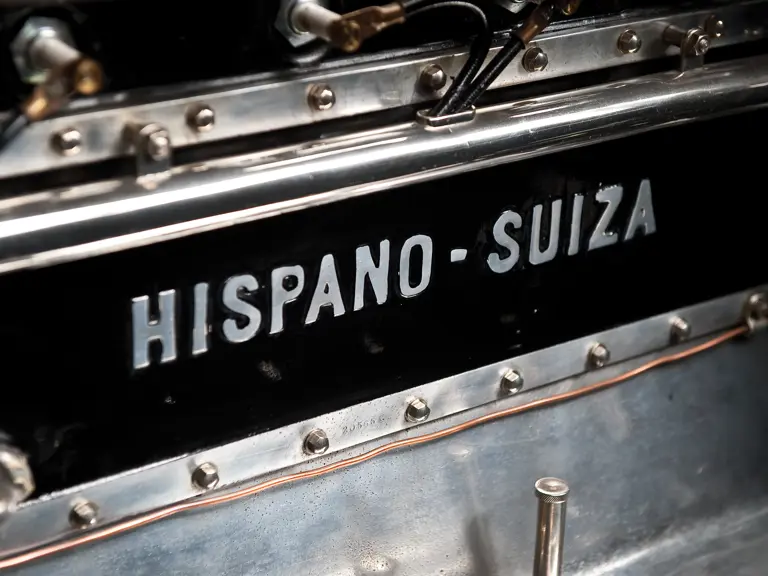
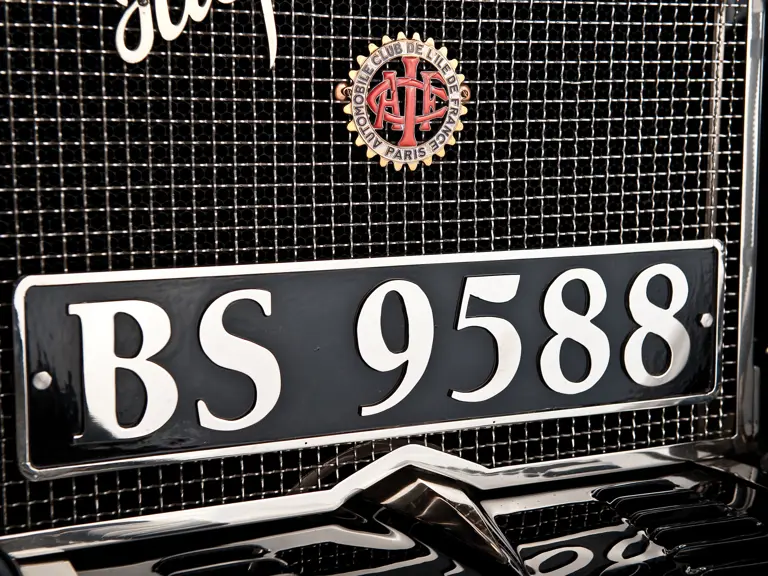
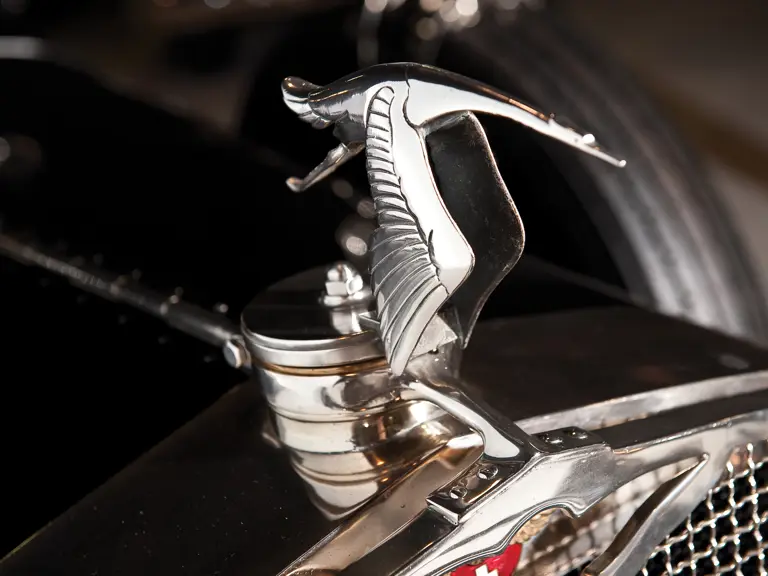
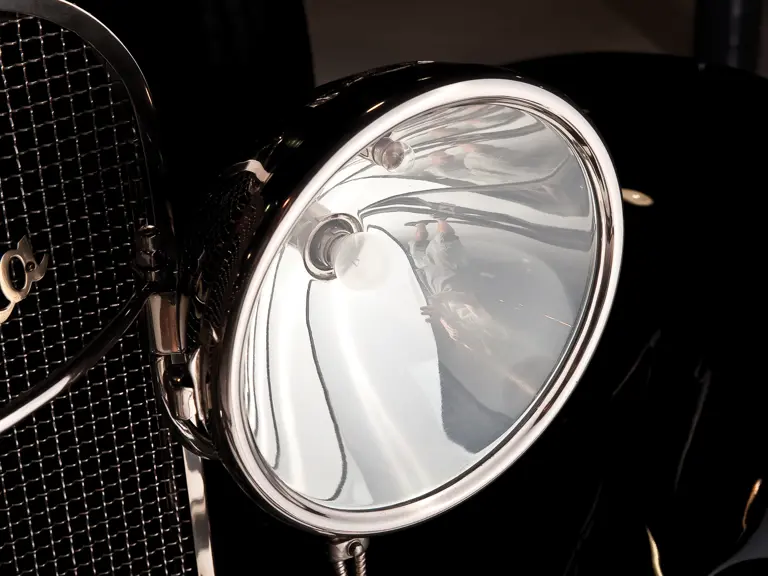
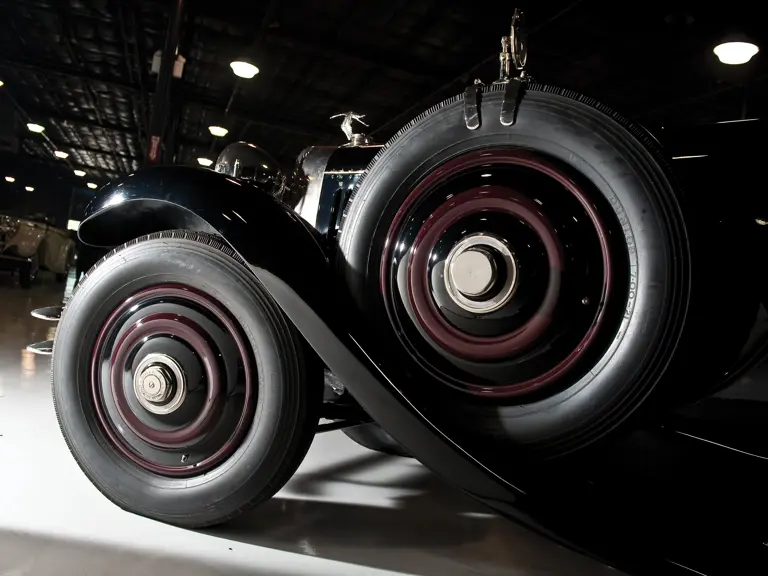
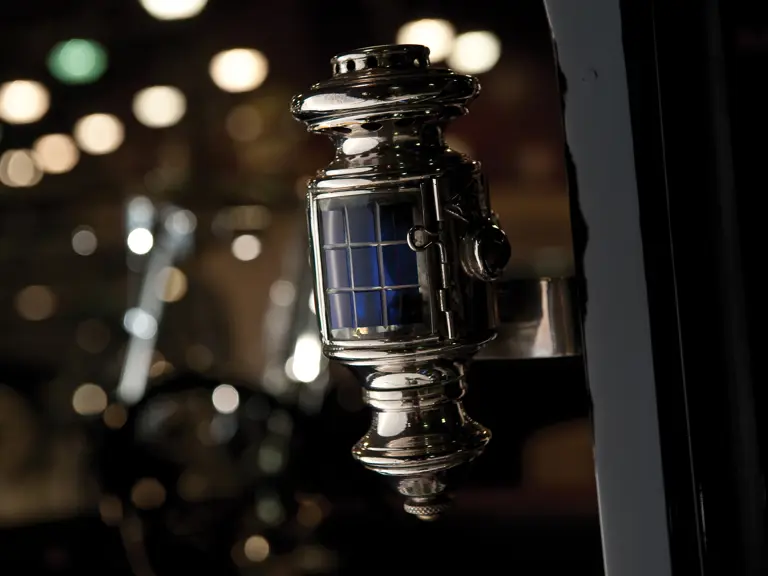
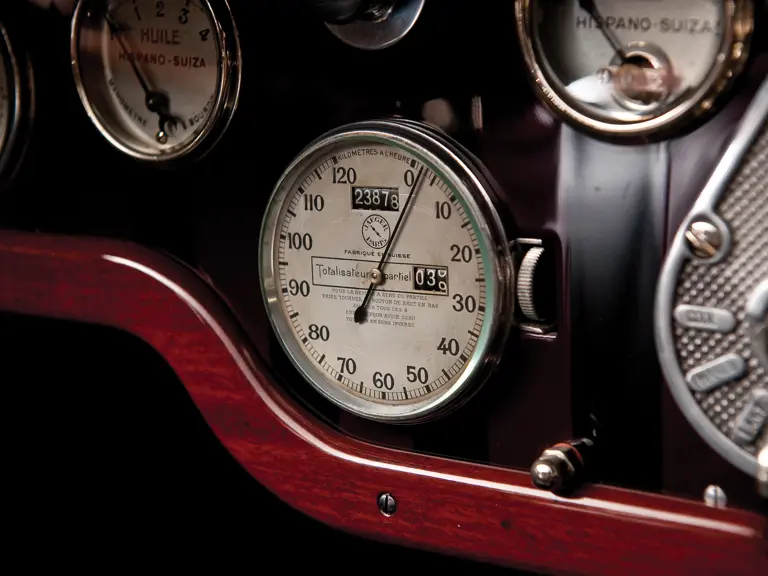
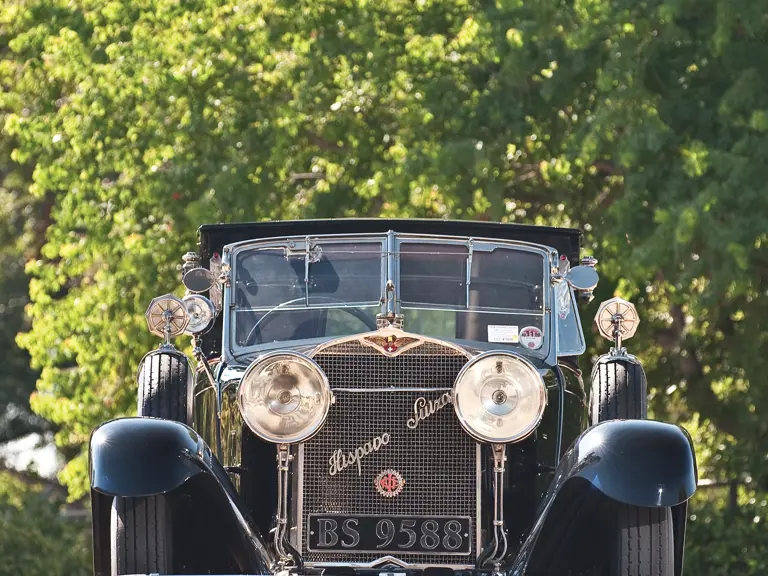
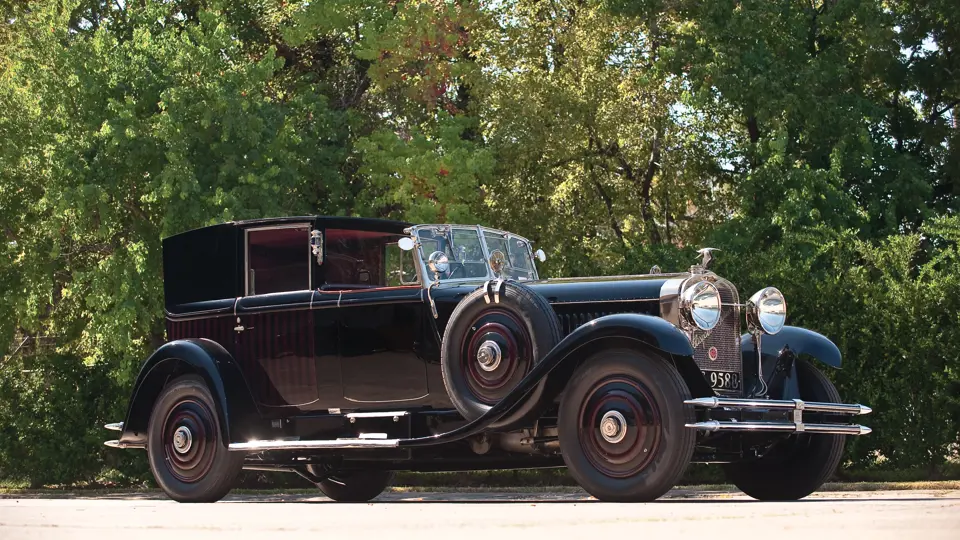
 | Monterey, California
| Monterey, California
